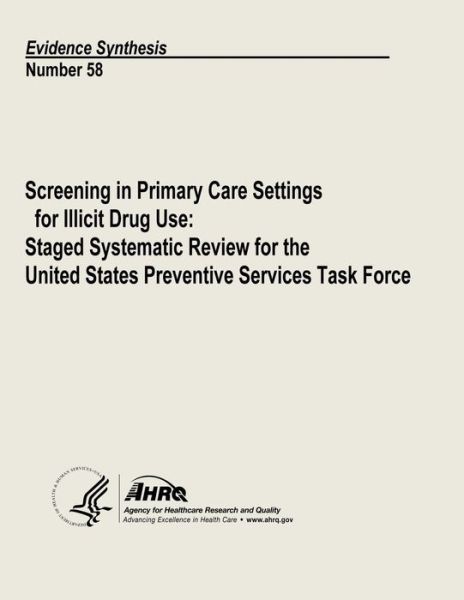
Vertel uw vrienden over dit artikel:
Screening for Hiv in Pregnant Women: Systematic Review to Update the U.s. Preventive Services Task Force Recommendation: Evidence Synthesis Number 96
U S Department of Heal Human Services
Screening for Hiv in Pregnant Women: Systematic Review to Update the U.s. Preventive Services Task Force Recommendation: Evidence Synthesis Number 96
U S Department of Heal Human Services
Publisher Marketing: The purpose of this report is to update a previous evidence review commissioned by the U. S. Preventive Services Task Force (USPSTF) on screening for asymptomatic HIV infection in pregnant women, including adolescents. In 2005, based on the earlier review, the USPSTF recommended that clinicians screen all pregnant women for HIV (grade A recommendation). Although the USPSTF found no studies that directly evaluated prenatal HIV screening versus no screening on risk of mother-to-child transmission or other clinical outcomes, it found good evidence that prenatal testing is accurate and acceptable to women and that treatment with recommended interventions (combination antiretrovirals, elective Cesarean delivery in women with viral loads greater than 1,000 copies/mL near the time of delivery, and avoidance of breastfeeding) is associated with major reductions in risk of mother-to-child transmission (from 14% to 25% in untreated women to 1% to 2% with treatment). The USPSTF concluded that benefits of treatments in reducing perinatal transmission substantially outweighed short-term harms, though evidence on long-term maternal or infant harms associated with screening and subsequent interventions was limited. The current report will be used by the USPSTF to update its 2005 recommendation on prenatal HIV screening. This update focuses on newer evidence on the accuracy and acceptability of rapid versus standard testing, the effectiveness of newer antiretroviral regimens for reducing mother-to-child transmission, long-term maternal outcomes following use of antiretroviral regimens during pregnancy, and maternal and infant harms associated with use of antiretroviral medications. Because perinatal practices and interventions related to prevention of HIV infection are substantially impacted by the availability of resources, the report will emphasize evidence applicable to typical practice in the United States. A major goal of prenatal screening for HIV is to reduce the risk of mother-to-child transmission through subsequent interventions. Other important goals are to improve long-term clinical outcomes in HIV-infected women, facilitate early identification of infected newborns, help women to make more informed future reproductive choices, and reduce risk of horizontal transmission through effects on risky behaviors. Using the methods developed by the USPSTF, the USPSTF and the Agency for Healthcare Research and Quality (AHRQ) determined the scope and key questions for this review. Investigators created an analytic framework with the key questions and patient populations, interventions, and outcomes reviewed. The target population for HIV screening was pregnant women without signs or symptoms of HIV infection. Key Questions include: Key Question 1. What are the benefits of HIV screening versus no screening in asymptomatic pregnant women on maternal or child morbidity, mortality, or quality of life or rates of mother-to-child transmission? Key Question 2a. What is the yield (number of new diagnoses) of repeat HIV screening in asymptomatic pregnant women? Key Question 2b. What are the adverse effects (including false-positive results and anxiety) of rapid versus standard HIV testing in asymptomatic pregnant women? Key Question 3a. What is the effectiveness of newer antiretroviral regimens for reducing mother-to- child transmission? Key Question 3b. What are the effects of antiretroviral regimens in pregnant, HIV-positive women on long-term maternal morbidity, mortality, or quality of life? Key Question 3c. What are the harms (including longer-term harms) to the mother or child associated with antiretroviral therapy during pregnancy?
| Media | Boeken Paperback Book (Boek met zachte kaft en gelijmde rug) |
| Vrijgegeven | 17 april 2013 |
| ISBN13 | 9781484142622 |
| Uitgevers | Createspace |
| Pagina's | 106 |
| Afmetingen | 216 × 279 × 6 mm · 263 g |
Meer door U S Department of Heal Human Services
Bekijk alles van U S Department of Heal Human Services ( bijv. Paperback Book )

































